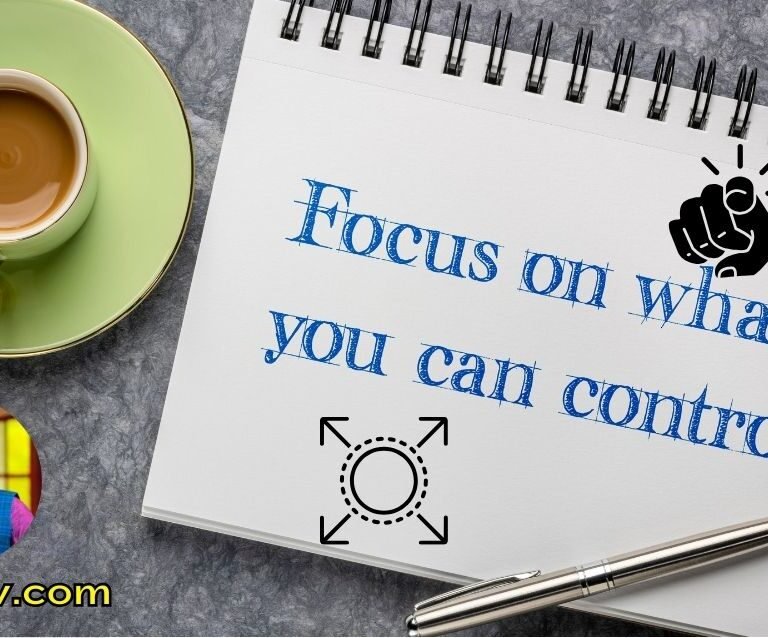Mindfulness and Productivity
Mindfulness, a concept rooted in meditation practices, has gained significant attention in contemporary discussions surrounding productivity. Originating from ancient Eastern traditions, particularly Buddhism, mindfulness involves a purposeful attention to the present moment, allowing individuals to observe their thoughts and feelings without judgment. This practice of grounding oneself in the here and now can profoundly impact various aspects of life, including work efficiency and overall well-being.
As workplaces evolve and the pressure to perform intensifies, mindfulness has emerged as a crucial tool for enhancing productivity. By fostering a heightened awareness of one’s thoughts and feelings, mindfulness enables individuals to better manage stress, reduce distraction, and enhance focus. The interconnectedness of mindfulness and productivity lies in the way it cultivates a state of flow, where individuals engage deeply in their tasks, leading to improved performance and creativity. This synergy contributes to a more fulfilling work experience, where tasks are approached with clarity and intention.
In the context of modern productivity discussions, mindfulness is seen not merely as a relaxation technique but as a valuable strategy that individuals and organizations can adopt. It addresses the common challenges of multitasking and cognitive overload, prevalent in today’s fast-paced work environment. By integrating mindfulness practices such as meditation, breathing exercises, or mindful breaks into daily routines, employees and leaders can create a culture that values mental clarity and presence. This approach not only supports individual productivity but also fosters a collaborative atmosphere that benefits the entire organization.
Thus, the exploration of mindfulness as a productivity tool reveals its capacity to transform the way we work, promoting a more engaged and balanced approach that supports both personal well-being and professional success.
Understanding Focus in Mindfulness
Focus, within the realm of mindfulness, refers to the ability to direct one’s attention toward the present moment without being distracted by external stimuli or internal thoughts. This skill is integral to mindfulness practices, which are designed to cultivate awareness and concentration. By training the mind to remain anchored in the now, individuals enhance their overall productivity and emotional well-being.
Mindfulness practices such as guided meditation and breath awareness serve as effective tools for sharpening focus. Guided meditation typically involves listening to a facilitator who provides verbal cues, allowing practitioners to visualize and concentrate on specific themes or concepts. This structure creates an environment where the mind can safely explore thoughts without judgment, reinforcing the ability to focus on the task at hand.
Breath awareness is another fundamental technique utilized in mindfulness to improve concentration. By directing attention to the natural rhythm of one’s breath, individuals can cultivate a deep sense of presence. This practice fosters a relaxed yet alert state of mind, promoting clarity and reducing the prevalence of distractions. When attention is consistently brought back to the breath, the mind learns to recognize when it wanders, making it easier to return focus to important tasks.
Implementing these mindfulness techniques into daily routines can lead to notable improvements in one’s capacity to concentrate. The continuous practice of bringing attention back to the present moment strengthens the neural pathways associated with focus, leading to enhanced engagement with work or other activities. Ultimately, by engaging in mindful practices, individuals can experience a profound shift in their ability to focus, resulting in greater productivity and fulfillment.
Mindfulness Practices to Enhance Decision-Making
In the realm of productivity, mindfulness practices serve as essential tools that facilitate effective decision-making. One prominent technique is reflective journaling, which encourages individuals to record their thoughts, feelings, and decisions. This practice not only fosters self-awareness but also provides a structured way to analyze past decisions and their outcomes. By reflecting on what choices were beneficial and which were not, individuals can cultivate a deeper understanding of their decision-making patterns, ultimately leading to more informed and thoughtful choices in the workplace.
Another critical aspect of mindfulness in decision-making is mindful listening. This involves being fully present and engaged when interacting with colleagues or stakeholders. Practicing mindful listening allows individuals to absorb information more comprehensively, reducing the likelihood of misunderstandings that may influence decisions negatively. When decision-makers are attuned to the perspectives and concerns of others, they can consider a wider array of viewpoints and factors, enhancing the overall quality of their choices. It fosters an environment of collaboration and respect, which can lead to better outcomes.
Additionally, the use of decision matrices is an effective method for integrating mindfulness into the decision-making process. A decision matrix facilitates a structured evaluation of various options based on predetermined criteria, such as cost, feasibility, and impact. By approaching decisions in this systematic manner, individuals can minimize cognitive biases and emotional responses that often cloud judgment. This structured approach ensures that all pertinent data is systematically considered, leading to more logical and objective decisions, further improving productivity in professional settings.
In conclusion, incorporating mindfulness practices like reflective journaling, mindful listening, and decision matrices into the decision-making process can significantly enhance productivity. By making these approaches a part of daily routines, professionals can achieve better clarity, improved choices, and ultimately a more effective work environment.
The Relationship Between Mindfulness and Productivity
Mindfulness, defined as the practice of being fully present and engaged in the moment without judgment, has garnered significant attention in the field of productivity improvement. Various studies have demonstrated that incorporating mindfulness into daily routines can lead to substantial enhancements in cognitive performance. Research indicates that mindfulness training can improve focus, leading to better attention management, which is crucial in today’s distraction-laden environments.
One notable study published in the journal “Psychological Science” found that participants who engaged in mindfulness practices showed increased cognitive flexibility, allowing them to adapt their thoughts and behaviors effectively when faced with new challenges. This adaptivity is essential for efficient problem-solving and decision-making, two key components of productivity. As individuals cultivate mindfulness, they often report reduced instances of procrastination; becoming more aware of their thoughts and feelings allows them to address avoidance behaviors more consciously, resulting in a more proactive approach toward tasks.
Additionally, mindfulness aids in effective time management, enabling individuals to prioritize tasks better and allocate time more judiciously. By enhancing self-awareness, mindfulness allows individuals to distinguish between tasks that are urgent and those that are important, thereby improving overall work efficiency. The ability to remain calm and focused under pressure fosters a state of ‘flow,’ where individuals become fully immersed in their activities, leading to higher quality outcomes and a more fulfilling work experience.
In essence, the practice of mindfulness serves as a powerful productivity tool. As individuals deepen their mindfulness practices, they are likely to experience greater cognitive clarity, a decrease in procrastination tendencies, and an improved capacity for time management. By understanding and harnessing these effects, one can effectively leverage mindfulness as a means to enhance productivity across various aspects of life.
Fostering Flow: The Ultimate State of Productivity
Flow is often described as the ultimate state of productivity, characterized by complete immersion and engagement in an activity. It is that exhilarating experience where individuals lose track of time as they focus entirely on their task at hand. This state, first defined by psychologist Mihaly Csikszentmihalyi, encapsulates a harmonious balance between challenge and skill, making it essential for fostering maximum productivity and creativity in both personal and professional endeavors.
One of the primary benefits of mindfulness is its ability to cultivate flow. By practicing mindfulness, individuals can enhance their concentration, reduce distractions, and create a mental environment conducive to reaching this optimal state. Key characteristics of flow include having clear goals, immediate feedback, and a sense of control over one’s actions. These elements can be significantly optimized through mindfulness techniques.
To achieve flow, it is essential to start with effective goal-setting. Clear, achievable goals provide direction and ensure that tasks are manageable. Mindfulness encourages individuals to set intentions and break down larger projects into smaller, more digestible tasks. This segmentation not only minimizes overwhelm but also facilitates the sense of progress, which is crucial in maintaining motivation.
Additionally, creating a conducive work environment plays a vital role in fostering flow. Mindfulness practices, such as decluttering physical spaces and minimizing digital distractions, can greatly enhance focus. Mindfulness techniques can further help establish routines and transitions that prepare the mind and body for deep work, allowing for sustained periods of concentration without interruptions.
Ultimately, integrating mindfulness into daily activities allows individuals to experience flow more consistently. Through deliberate practices and adjustments, the synergy between mindfulness and flow can lead to greater productivity and fulfillment in every endeavor.
Real-Life Examples of Mindfulness in Action
In recent years, many organizations have embraced mindfulness practices, witnessing remarkable improvements in employee focus, fulfillment, and overall productivity. One noteworthy example is Google, which has integrated mindfulness into its corporate culture through its “Search Inside Yourself” program. This initiative, developed by a team of engineers, emphasizes emotional intelligence and mindfulness meditation. Employees reported enhanced concentration, better conflict resolution skills, and a greater sense of workplace satisfaction, leading to increased productivity and innovation.
Similarly, Aetna, an American health insurance company, adopted mindfulness strategies to combat employee stress and fatigue. The program included yoga sessions, meditation workshops, and mindfulness training. Participants indicated significant decreases in stress levels and improvements in work-life balance. This initiative resulted in a reported 28% reduction in healthcare costs and an overall increase in employee engagement. Aetna’s success illustrates how mindfulness practices can lead to measurable improvements in productivity while fostering a healthier workforce.
Additionally, the tech company Intel has recognized the value of mindfulness. They implemented a Mindfulness-Based Stress Reduction (MBSR) course for their employees, focusing on moment-to-moment awareness and managing work pressures. Feedback from participants highlighted enhanced focus and creativity, along with reduced anxiety levels. Many employees expressed appreciation for the program, stating it allowed them to better handle workplace challenges, thus leading to increased productivity.
These case studies underscore the effectiveness of mindfulness as a productivity tool. By integrating various mindfulness practices into everyday work routines, individuals and organizations can experience increased focus, greater fulfillment, and a consistent state of flow. The benefits extend beyond mere numbers; they fundamentally reshape the workplace environment into one that values mental health and well-being. As more organizations recognize these advantages, the trend of utilizing mindfulness as a critical productivity tool is anticipated to continue its upward trajectory.
Challenges of Implementing Mindfulness
Adopting mindfulness practices in daily life can often present several challenges that hinder individuals from fully experiencing its benefits. One of the most significant barriers is time constraints. In today’s fast-paced world, many individuals struggle to find time amid their packed schedules to pause and engage in mindfulness exercises. This perceived lack of time can discourage individuals from even starting a mindfulness practice, leading to frustration and disengagement.
Another challenge is the preconceived notions surrounding mindfulness. Some may view it as a trend or an unrealistic goal that requires extensive training, while others might associate it solely with meditation, dismissing it as unmanageable in their busy lives. These misconceptions can create mental blocks, preventing individuals from exploring mindfulness as a legitimate productivity tool. It is essential to recognize that mindfulness does not require lengthy sessions; simple practices can be seamlessly integrated into daily activities.
Distractions, both internal and external, also significantly disrupt the practice of mindfulness. The continuous presence of digital devices and the constant barrage of information can make it challenging to concentrate on the present moment. Additionally, internal distractions, such as racing thoughts or self-doubt, can lead to an inability to focus on mindfulness practices effectively. Overcoming these distractions requires intentional strategies, such as creating designated time slots for mindfulness, minimizing digital interruptions, and practicing self-compassion when distractions arise.
To counter these challenges, individuals can start small by incorporating mindfulness techniques into routine activities, such as mindful eating or walking. Setting realistic goals and allowing for flexibility in practice can ease the pressure of maintaining a mindfulness routine. Embracing a gradual approach can foster persistence, ultimately leading to a more fulfilling experience with mindfulness as a productive tool.
Creating a Mindfulness Routine for Enhanced Productivity
Establishing a personalized mindfulness routine can significantly enhance productivity by fostering focus, clarity, and overall fulfillment. To create an effective routine, one must consider individual preferences and lifestyle variables. Start by identifying specific times during the day when mindfulness practices can be most beneficial, such as early in the morning, during lunch breaks, or before transitioning between tasks.
Daily meditation is a foundational aspect of a mindfulness routine. Allocate a dedicated time each day, even if it’s just 5 to 10 minutes, for guided or unguided meditation. This practice allows the mind to settle and prepares it for deeper focus on upcoming tasks. Various applications and online resources offer a range of meditative styles, from breath-focused techniques to guided imagery, catering to diverse personalities and preferences.
In addition to meditation, incorporating mindful breaks throughout the day can enhance productivity. Consider integrating short pauses to stretch, breathe, or engage in a quick grounding exercise. These breaks can effectively alleviate stress and reset mental focus, preventing task fatigue and maintaining a state of flow. Techniques such as the “5-4-3-2-1” grounding exercise, which involves acknowledging five things you see, four things you can touch, three sounds you hear, two things you can smell, and one thing you can taste, can be particularly effective.
Furthermore, integrating mindfulness techniques into existing workflows is crucial. This could involve setting reminders to practice mindfulness before significant meetings or utilizing mindful listening techniques while engaging with colleagues. By adapting practices to fit seamlessly into one’s routine, productivity can be enhanced without feeling burdensome.
Ultimately, consistency and adaptability are key. Regular reflection on what methods work best will help refine the mindfulness routine over time, ensuring it remains a valuable tool for enhancing productivity and fostering a sense of fulfillment in daily activities.
Mindfulness for Lasting Change
As we have explored throughout this discussion, the integration of mindfulness into daily routines can bring about noteworthy enhancements in focus, decision-making capabilities, and overall productivity. By cultivating mindfulness, individuals can create a state of awareness that allows them to remain present, reducing distractions and fostering a deeper engagement with tasks at hand. This heightened state of awareness supports better concentration, allowing for a more deliberate approach to work. Consequently, each decision made becomes more thoughtful, leading to improved outcomes and less reactivity.
Moreover, mindfulness serves as a catalyst for achieving fulfillment in one’s personal and professional life. When practiced regularly, it encourages an attitude of gratitude and appreciation for the moment. This shift in perspective can diminish feelings of overwhelm and stress. Instead, individuals may find themselves tapping into a sense of flow, in which they experience a seamless alignment between their efforts and outcomes. Ultimately, such states not only boost productivity but also enhance overall life satisfaction.
It is essential to recognize mindfulness not merely as a fleeting trend or an additional task on one’s to-do list but as a foundational productivity tool. By committing to regular mindfulness practice, individuals lay the groundwork for profound transformation in their productivity levels. This transformation does not occur overnight; rather, it is the result of consistent practice and dedication to being present. The benefits are substantial, extending beyond the workplace into various facets of life.
In embracing mindfulness as a core strategy for productivity, individuals empower themselves to navigate challenges with clarity, achieve their goals more effectively, and ultimately create a more fulfilling life. Adopting this approach can lead to lasting positive change that resonates well beyond mere efficiencies.









